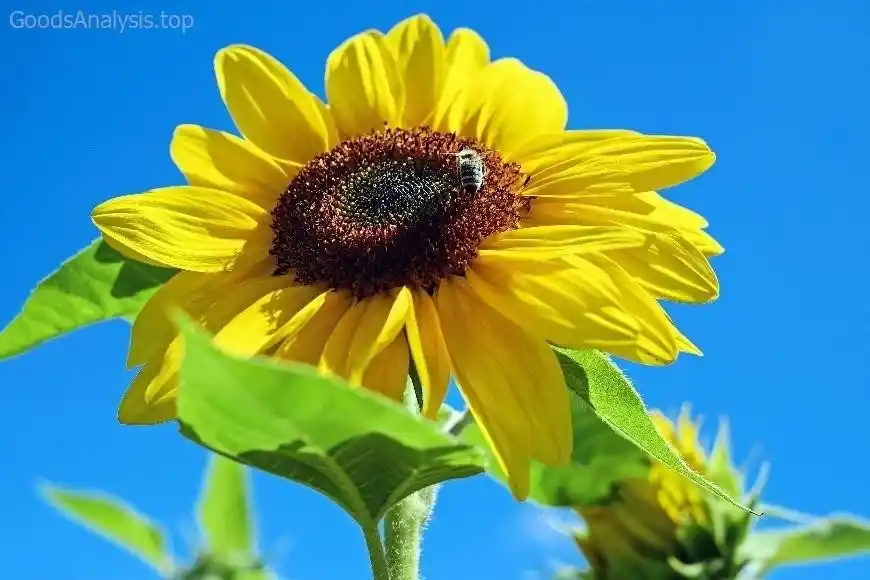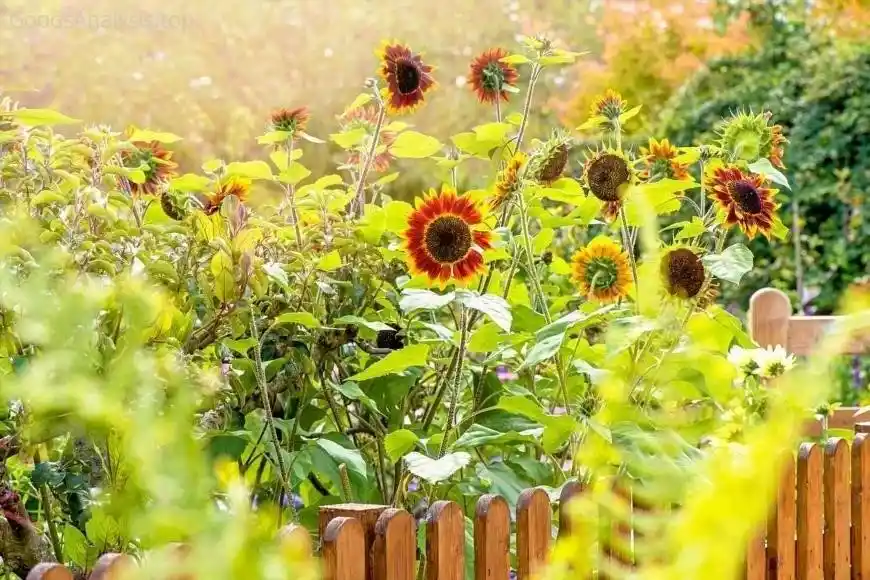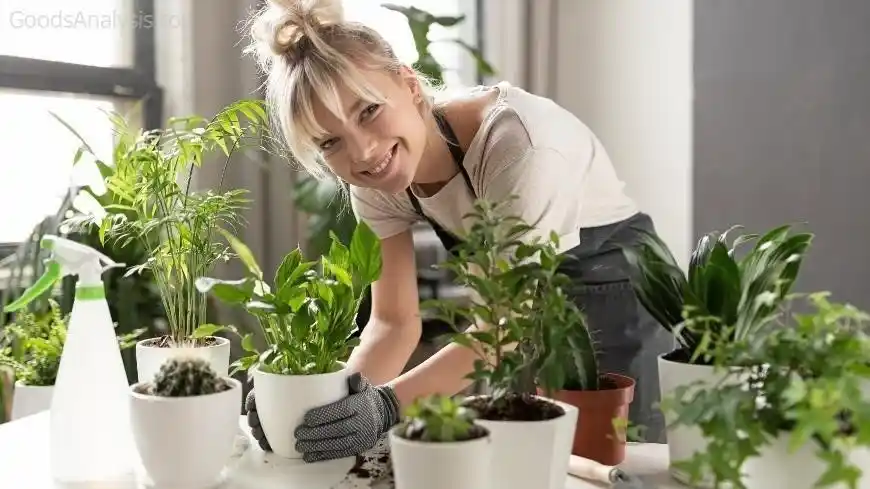Sunflowers (Helianthus annuus) are not just beautiful, towering giants that brighten up gardens and fields; they are also relatively easy to grow, making them a perfect addition for gardeners of all experience levels. Whether you’re planting them for their seeds, oil, or simply to enjoy their cheerful faces, sunflowers are a rewarding crop to grow. This guide provides practical, reliable advice on how to grow sunflowers, backed by scientific research and years of horticultural knowledge.
1. Choosing the Right Variety of Sunflower
Not all sunflowers are created equal. There are several varieties to choose from, each with its own unique characteristics. Sunflowers can range in size from small, dwarf types that grow just a few feet tall to giants that can reach 12 feet or more. Some popular varieties include:
- Mammoth Sunflower: Known for its towering height (up to 12 feet) and large heads, these are ideal if you’re looking for a dramatic statement plant.
- Autumn Beauty: A mix of red, yellow, and orange flowers, this variety offers shorter plants, making it suitable for smaller spaces.
- Teddy Bear: A dwarf variety with multiple branches, each producing smaller, fluffy flowers. Perfect for containers or small gardens.
2. Planting Sunflowers: The Basics
Sunflowers thrive in sunny locations, so choose a spot that receives full sunlight for at least 6-8 hours a day. They prefer loose, well-drained soil with a pH level between 6.0 and 7.5, although they are quite adaptable.
When to Plant
The best time to plant sunflowers is in the spring, after the last frost has passed. In most regions, this means planting them between late April and early May. Sunflowers are very frost-sensitive, and cold soil can delay germination or stunt growth. Wait until the soil is warm—ideally, between 55°F and 60°F (13-16°C).
How to Plant

Sunflowers are direct seeding plants, meaning you sow them directly into the soil rather than starting them indoors. To plant:
- Space the seeds about 6 inches apart for smaller varieties, and 12-18 inches apart for taller ones.
- Plant the seeds about 1-2 inches deep into the soil. If you’re planting in rows, space the rows about 30-36 inches apart.
- Water the area gently but thoroughly to ensure good seed-to-soil contact.
Pro Tip: If you’re worried about birds eating the seeds, you can cover them with a lightweight mesh until they begin sprouting.
3. Caring for Sunflowers
Once your sunflowers are in the ground, the key to success is providing them with the right care at every stage of growth.
Watering
Sunflowers are drought-tolerant once established, but they need consistent watering during their initial growth phase. Aim for about 1 inch of water per week. If the weather is particularly hot, you may need to water more frequently, especially during the flowering stage. Make sure to water deeply to encourage strong root growth, but avoid wetting the foliage, as this can promote fungal diseases.
Fertilizing
While sunflowers are not heavy feeders, they do benefit from an occasional boost. Use a balanced, slow-release fertilizer when planting, and consider a light dose of nitrogen-rich fertilizer in the early stages of growth to support their impressive green growth. Avoid excessive nitrogen later in the season, as this can result in more leaves than flowers.

Support
Taller sunflower varieties may need some extra support, especially if you’re growing them in areas prone to wind. Use stakes, or a tomato cage, to help them stand tall and avoid broken stems. If you are growing sunflowers in a windy area, ensure that the plants are spaced sufficiently apart to minimize the risk of damage.
4. Common Pests and Problems
While sunflowers are generally low-maintenance, they are susceptible to a few common pests and diseases. Here’s how to manage them:
Pests:
- Sunflower beetles: These little critters can eat the leaves and seeds of sunflowers. Regularly inspect plants and remove them by hand or spray with insecticidal soap.
- Aphids: These tiny bugs can congregate on the undersides of leaves, sucking out plant juices. They can be controlled with insecticidal soap or by encouraging natural predators like ladybugs.
Diseases:
- Powdery mildew: A fungal disease that appears as white, powdery spots on leaves. Prevent this by spacing plants properly for good air circulation and avoiding overhead watering.
- Rust: A fungal infection that causes orange or yellow pustules on leaves. Remove and destroy infected leaves to prevent the spread.
A Word of Warning: Sunflowers are sometimes affected by Verticillium wilt, a soil-borne disease that causes leaves to yellow and wilt. If you suspect this, remove and discard infected plants, and avoid planting sunflowers in the same soil the following year.
5. Harvesting Sunflowers

Depending on the variety, sunflowers will typically bloom in 70 to 100 days. The flowers are ready to harvest when the petals begin to dry and fall off, and the back of the flower head turns yellow or brown.
To harvest:
- Cut the flower heads off with about 12 inches of stem.
- If you’re harvesting seeds, allow the flower heads to dry completely (2-3 weeks) in a cool, dry location before removing the seeds.
6. Uses for Sunflowers
Sunflowers are versatile, and every part of the plant can be used in one way or another:
- Seeds: Sunflower seeds are delicious as snacks, can be used in cooking, or pressed to make sunflower oil.
- Flower heads: These can be dried and used in craft projects or as natural decor.
- Pet food: Sunflower seeds are commonly used in birdseed mixes, and some animals enjoy eating the plants themselves.
7. Common Issues and Solutions
Even the most seasoned gardener faces some challenges when growing sunflowers. Here are a few of the most common issues and how to handle them:
Problem 1: Sunflowers aren’t blooming
Sunflowers require full sun to bloom. If they’re in a shaded spot, they might not flower at all. Ensure they’re planted in a sunny spot and that they’re getting enough nutrients. If your soil is poor, consider amending it with compost.

Problem 2: Sunflowers leaning or falling over
This can happen due to weak stems or high winds. Try growing more compact varieties or use supports to help keep them upright. Some gardeners also use a technique called “hilling,” where they mound soil around the base of the plant to encourage a stronger root system.
8. Final Thoughts
Growing sunflowers is a joyful and relatively easy gardening endeavor that rewards you with beautiful blooms, nutritious seeds, and even oil. They’re perfect for beginners and experts alike and add an uplifting touch to any garden. However, keep in mind that, like any plant, they do require care, attention, and a little bit of patience. By being mindful of the pests, watering needs, and potential issues, you’ll be well on your way to a successful sunflower harvest.
Real People’s Thoughts on Growing Sunflowers
Maria (30, Italy): “I’ve grown sunflowers in my backyard for a few years now. I love how easy they are to grow, and the bees absolutely love them. The only issue I’ve had is with aphids, but a bit of neem oil took care of that!”
John (56, USA): “I started growing sunflowers when I moved to the country. They’re tough, and they give my garden some real height. A word of advice: make sure you plant them in a wind-free spot—those big flowers can snap easily in gusty conditions!”
Mei (45, China): “My kids love sunflowers. We planted a bunch last spring, and the seeds were perfect for making oil. But I had to watch out for powdery mildew. It wasn’t a big deal once I spaced them out properly.”
Samir (38, India): “We use sunflowers to decorate our yard, but I also like to use the seeds in my cooking. The key is to keep them well-watered but not too much. Overwatering leads to root rot, which I learned the hard way.”
Tania (60, Argentina): “I’ve been growing sunflowers for decades. They’re not fussy, but if you’re in a region with heavy rainfall, make sure your soil drains well. Otherwise, the roots can get waterlogged, and the plants will suffer.”
I hope you find this guide helpful—whether you’re a seasoned gardener or a beginner, sunflowers are a perfect plant to grow and enjoy year after year!









